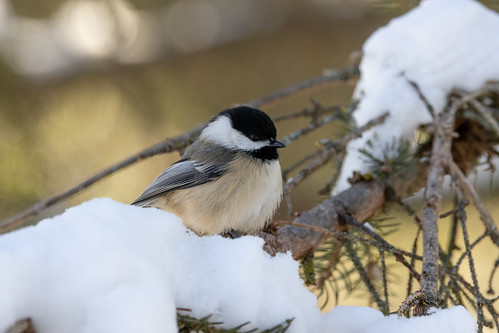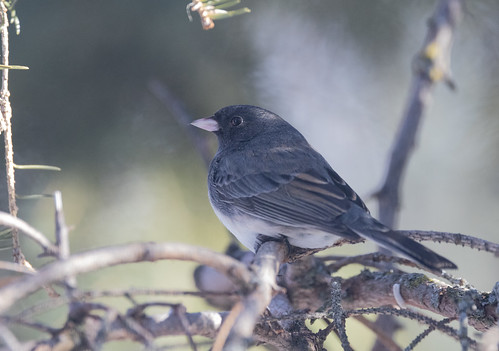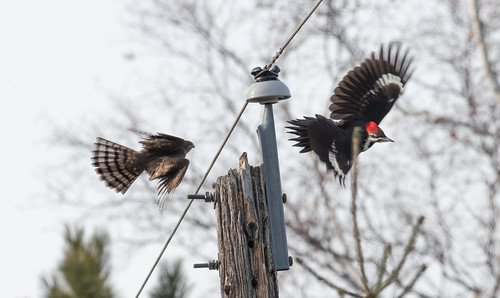Way back before Christmas, on December 21, the days stopped getting shorter. Not that they immediately started getting appreciably longer—the graph of day length over a year is a simple sine wave, the amplitude varying depending on where on Earth you are.
The graph is virtually flat at the Equator, where every day is almost exactly 12 hours long, and the sine wave is deep and dramatic near the two poles, where there is no daylight at all near one solstice and no total darkness at all near the other. Wherever you are, day length changes most gradually from day to day at both the trough and the crest—the days surrounding the two solstices—and changes most rapidly in the days surrounding the two equinoxes.
I get up early each morning, and my normal daily pattern of working at my desk next to the window, drinking my cup of coffee as I pay attention to first light and the first birds arriving, makes the time of sunrise each day much more noticeable and important to me than the time of sunset. At December’s end, when days are their shortest, the time of sunrise changes almost imperceptibly from day to day, but as we get into January every year, I start noticing the earlier sunrise each morning.
On February 1, the sun rose at 7:32 am here in Duluth. A minute before 7, while the tree branches were still shadows barely darker than the sky but the snow on the ground was starting to assume a slightly bluish cast, the first two juncos appeared. It was too dark to see them fly in—I’d been watching steadily, but they were suddenly just there, as if Scotty on the Starship Enterprise had beamed them onto my tray feeder and the ground beneath. In the darkness, they looked like generic sparrows until I held up my binoculars—I’ve always marveled at how binoculars gather light, and my 10x42 binoculars with their 42mm objective lens are amazing, making birds much more recognizable even at midnight than the best human eyes could do. By 7:10, it was light enough for me to see other juncos flying in from their roost somewhere behind my yard. Soon the whole flock of 12 was accounted for.
Three cardinals—one male and two females—are visiting almost daily this winter, but hardly ever between sunrise and sunset. I don’t know where they spend the rest of the day—if I’m not looking during twilight, I miss them. Most days they beat the juncos, but on February 1, the cardinals didn’t appear until 7:25, and disappeared at 7:30, two minutes before sunrise. I’ve heard a few cardinal songs in recent weeks, but later in the morning and only from a distance.
Birds that roost in cavities don’t notice the gradually brightening twilight the way juncos, cardinals, and other birds roosting in tree or shrub branches do, so woodpeckers aren’t often among the very first birds to arrive before sunrise, but for a while I was seeing one or two Pileated Woodpeckers several minutes before sunrise many mornings, back when my yard was Pileated Woodpecker Central, with three different individuals showing up just about every day. One or two had to be sleeping in a cavity somewhere right around here to be at my feeder so very early, though I never could see one enter or emerge from what look like good roost holes in my three box elders.
Now, since late last week, I’ve not been seeing any of them at first light, nor in the hour after sunrise before I leave to spend the day with my grandson. I don’t know why they disappeared so abruptly—nothing in my yard seems to have changed except that a Sharp-shinned Hawk showed up at least once on January 19. In the past I’ve seen sharpies terrorize Pileated Woodpeckers, so that might explain their sudden absence.
My first chickadees always appear before sunrise. My juncos usually concentrate at my big tray feeder and on the ground, but one or two sometimes visit the window feeder, though they usually wait until the chickadees let them know the coast is clear up there.
For the past week or so, redpolls have been in my yard every day. They have lots of rods in their retinas, so can see at lower light than most birds, but I usually don't see them until right around sunrise.
With our windows tightly closed, this being winter, I can’t hear chickadee sounds from indoors, but when I’m outside filling the feeders right before sunrise or open my office window to fill that feeder, their lovely Hey, sweetie! songs are ringing out each day now, and I always hear them when I get to my daughter’s house about 9 am, and then again at midday if I take Walter outside to play in the snow. Neither chickadees nor cardinals nest up here until April or May, but their songs on the coldest days of winter are consistently part of our normal winter phenology. These songs may not constitute any better evidence that spring is coming than a groundhog not seeing its shadow, but on mornings when the temperature is double-digits below zero, those chickadee and cardinal songs sure do fill us with hope.









